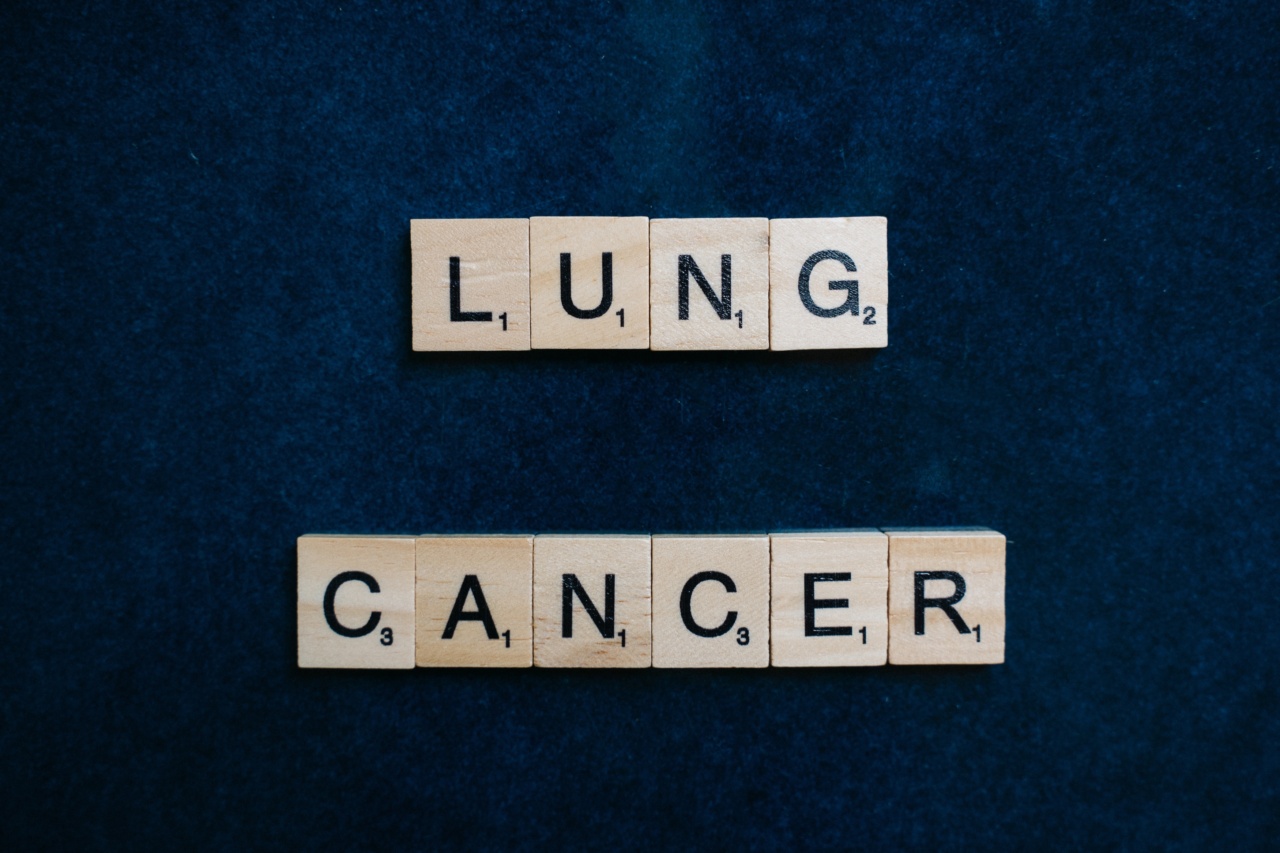When you hear about lung cancer, the first thing that comes to mind is smoking. However, smoking isn’t the only factor that can lead to lung cancer.
Non-smokers can also develop lung cancer, and some of the risk factors for non-smokers are different than those for smokers. In this article, we’ll explore the various risk factors for lung cancer in non-smokers to help you identify potential dangers and take preventive measures.
Radon Exposure
Radon is a radioactive gas that is produced by the natural decay of uranium in soil and rocks. When radon gas is released from the ground, it can seep into buildings and accumulate to dangerous levels. According to the U.S.
Environmental Protection Agency (EPA), radon is the second leading cause of lung cancer in non-smokers, after secondhand smoke.
If you spend a lot of time indoors and your house has a high level of radon, you may be at risk for lung cancer. Radon exposure is responsible for an estimated 21,000 lung cancer deaths each year.
The good news is that radon testing is easy and inexpensive. You can purchase a radon testing kit online or at a home improvement store, and follow the instructions to test your home for radon.
If your test results reveal high levels of radon, you can take steps to mitigate the problem by sealing cracks in floors and walls or installing a ventilation system.
Air Pollution
Air pollution is a major environmental hazard that affects millions of people worldwide. It’s also a significant risk factor for lung cancer in non-smokers.
According to the World Health Organization (WHO), air pollution causes an estimated 220,000 lung cancer deaths each year.
There are many types of air pollution, including outdoor pollution from industrial or vehicular emissions, and indoor pollution from cooking stoves or tobacco smoke.
Exposure to pollutants such as particulate matter and nitrogen dioxide can lead to lung inflammation and DNA damage, increasing the risk of lung cancer.
To reduce your exposure to air pollution, you can take several steps. For instance, you can check local air quality reports before going outside and avoid exercising near busy roads during peak traffic times.
Inside your home, you can improve air quality by using an air purifier or opening windows and doors to increase ventilation.
Occupational Exposures
People who work in certain industries may be exposed to hazardous substances that can increase the risk of lung cancer. Examples include asbestos, diesel exhaust, and some chemicals used in the manufacturing of plastics and textiles.
If you work in one of these industries, it’s important to follow safety guidelines and wear protective equipment to reduce the risk of exposure.
You should also be aware of the signs and symptoms of lung cancer, such as chest pain, coughing, and shortness of breath, and seek medical attention if you notice any of these symptoms.
Poor Diet and Lack of Exercise
Other lifestyle factors that can contribute to lung cancer risk in non-smokers include poor diet and lack of exercise.
A diet that is high in processed foods and low in fruits and vegetables can lead to chronic inflammation, which can damage DNA and raise the risk of cancer. Likewise, a sedentary lifestyle can lead to weight gain and other health problems that can increase the risk of cancer.
To reduce your risk of lung cancer, it’s important to eat a healthy diet that is rich in fruits, vegetables, and whole grains, and to get regular exercise.
Aim for at least 150 minutes of moderate exercise or 75 minutes of vigorous exercise per week.
Indoor Radon Testing
As mentioned earlier, indoor radon testing is essential for identifying radon risks in your home. Radon is a colorless, odorless gas that can seep into your home through cracks in the foundation or walls.
It is the second leading cause of lung cancer and can be dangerous even in low levels.
The best way to test for radon is to use an indoor radon testing kit. These kits come in various forms, but they all require that you leave the testing device in one room of your home for a certain amount of time.
Once the testing period is over, you’ll mail the device to a lab for analysis. You’ll receive a report from the lab that tells you what level of radon is present in your home and whether it’s safe.
When to Get Screened for Lung Cancer
Regular lung cancer screening is the best way to catch lung cancer early and improve your chances of survival. However, not everyone needs to be screened for lung cancer.
The decision to screen should be made in consultation with your doctor, based on your individual risk factors.
Generally, the U.S. Preventive Services Task Force recommends annual lung cancer screening for people who meet the following criteria:.
- Are between 50 and 80 years old
- Have a 20 pack-year smoking history (equivalent to one pack a day for 20 years)
- Currently smoke or have quit within the past 15 years
If you are a non-smoker, your doctor may recommend screening if you have been exposed to radon or other environmental carcinogens, or if you have a family history of lung cancer.
Conclusion
Lung cancer is a serious disease that can be caused by a range of factors, not just smoking. Non-smokers can also be at risk for lung cancer, and it’s important to be aware of the various risk factors and take preventive measures.
From testing your home for radon to eating a healthy diet and getting regular exercise, there are many steps you can take to reduce your risk of lung cancer and improve your overall health.





























